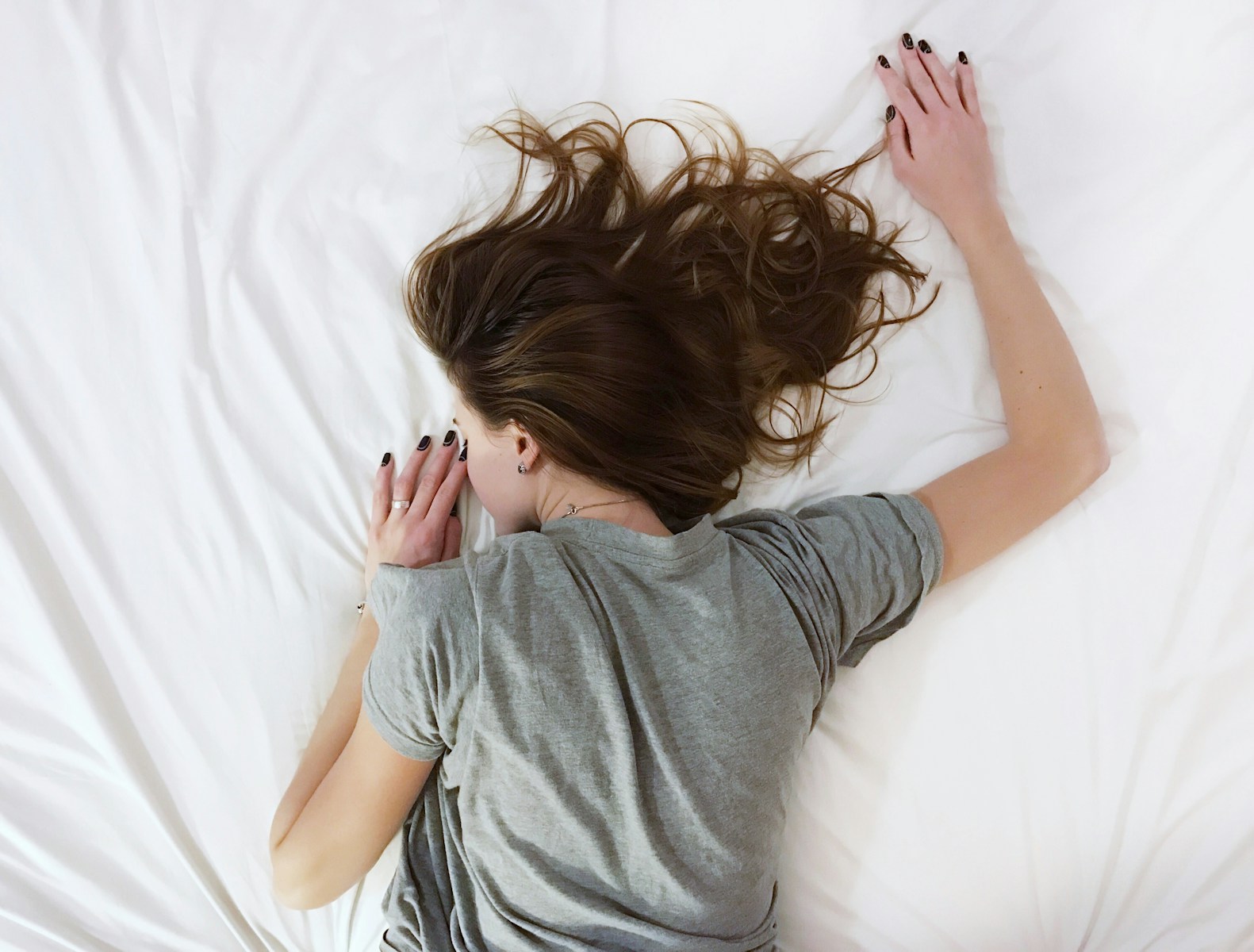Sleep disturbances encompass a wide range of issues that can disrupt the natural sleep cycle, leading to inadequate rest and a host of related problems. These disturbances can manifest as insomnia, sleep apnea, restless leg syndrome, or even nightmares. Insomnia, for instance, is characterized by difficulty falling asleep or staying asleep, often resulting in daytime fatigue and irritability.
Sleep apnea, on the other hand, involves repeated interruptions in breathing during sleep, which can lead to fragmented sleep and decreased oxygen levels in the body. Understanding these conditions is crucial for identifying effective strategies to improve sleep quality. The causes of sleep disturbances are multifaceted and can include psychological factors such as anxiety and depression, physical health issues like chronic pain or respiratory problems, and lifestyle choices such as irregular sleep patterns or excessive caffeine consumption.
For example, individuals experiencing high levels of stress may find it challenging to unwind at night, leading to prolonged periods of wakefulness. Similarly, those with chronic pain conditions may struggle to find a comfortable sleeping position, further exacerbating their sleep issues. Recognizing the underlying causes of sleep disturbances is essential for developing targeted interventions that can restore healthy sleep patterns.
Key Takeaways
- Sleep disturbances can be caused by a variety of factors including stress, anxiety, and poor sleep habits.
- Creating a sleep-friendly environment involves keeping the bedroom dark, quiet, and cool, and investing in a comfortable mattress and pillows.
- Establishing a consistent sleep schedule helps regulate the body’s internal clock and can improve overall sleep quality.
- Practicing relaxation techniques such as deep breathing, meditation, or gentle yoga can help calm the mind and prepare the body for sleep.
- Limiting screen time before bed and avoiding stimulants and heavy meals can help signal to the body that it’s time to wind down and prepare for sleep.
Creating a Sleep-Friendly Environment
Lighting: The Key to Melatonin Production
A dark room is generally more conducive to sleep than a brightly lit one, as darkness signals the body to produce melatonin, the hormone responsible for regulating sleep-wake cycles. To create an optimal sleeping environment, consider using blackout curtains or eye masks to block out unwanted light.
Minimizing Noise for a Tranquil Atmosphere
Additionally, minimizing noise through soundproofing measures or using white noise machines can help create a tranquil atmosphere that fosters relaxation. Temperature is another critical element in establishing a sleep-friendly environment.
The Ideal Sleeping Temperature and a Clutter-Free Bedroom
The ideal sleeping temperature typically ranges between 60 to 67 degrees Fahrenheit (15 to 19 degrees Celsius). A room that is too hot or too cold can lead to discomfort and frequent awakenings throughout the night. To achieve this optimal temperature, consider using breathable bedding materials and adjusting your thermostat accordingly. Furthermore, decluttering the bedroom and ensuring that it is clean and organized can contribute to a sense of calmness, making it easier to unwind and prepare for sleep.
Establishing a Consistent Sleep Schedule
One of the most effective strategies for improving sleep quality is establishing a consistent sleep schedule. This involves going to bed and waking up at the same time every day, even on weekends. By adhering to a regular schedule, the body’s internal clock becomes more synchronized, making it easier to fall asleep and wake up naturally.
This consistency helps regulate the production of melatonin and other hormones that influence sleep patterns. For example, individuals who maintain a regular sleep schedule often report feeling more alert and refreshed during the day compared to those with erratic sleeping habits. In addition to promoting better sleep quality, a consistent sleep schedule can also enhance overall health and well-being.
Research has shown that irregular sleep patterns are associated with various health issues, including obesity, diabetes, and cardiovascular disease. By prioritizing a regular sleep routine, individuals can mitigate these risks and improve their long-term health outcomes. To facilitate adherence to a consistent schedule, consider setting reminders or alarms to signal bedtime and wake-up time.
Over time, this practice can help reinforce healthy sleep habits that contribute to improved physical and mental health.
Practicing Relaxation Techniques
| Technique | Benefits | Duration |
|---|---|---|
| Deep Breathing | Reduces stress, lowers blood pressure | 5-10 minutes |
| Progressive Muscle Relaxation | Relieves muscle tension, improves sleep | 15-20 minutes |
| Mindfulness Meditation | Increases self-awareness, reduces anxiety | 10-30 minutes |
Incorporating relaxation techniques into one’s nightly routine can significantly enhance the ability to fall asleep and stay asleep throughout the night. Techniques such as deep breathing exercises, progressive muscle relaxation, and mindfulness meditation have been shown to reduce stress and promote a sense of calmness before bedtime. For instance, deep breathing exercises involve inhaling deeply through the nose, holding the breath for a few seconds, and then exhaling slowly through the mouth.
This practice not only helps lower heart rate but also encourages the body to enter a state of relaxation conducive to sleep. Mindfulness meditation is another powerful tool for promoting relaxation before bed. This practice involves focusing on the present moment without judgment, allowing individuals to let go of racing thoughts and worries that may interfere with their ability to fall asleep.
Engaging in mindfulness meditation for just a few minutes each night can help cultivate a sense of peace and tranquility that enhances overall sleep quality. Additionally, incorporating gentle stretching or yoga into the bedtime routine can further promote relaxation by releasing tension in the body and preparing it for rest.
Limiting Screen Time Before Bed
The pervasive use of electronic devices has become a significant factor contributing to sleep disturbances in modern society. The blue light emitted by screens from smartphones, tablets, and computers can interfere with the body’s natural production of melatonin, making it more challenging to fall asleep at night. Research has shown that exposure to blue light in the evening can delay the onset of sleep and reduce overall sleep duration.
To mitigate these effects, it is advisable to limit screen time at least one hour before bedtime. Instead of scrolling through social media or watching television in the evening, consider engaging in activities that promote relaxation and prepare the mind for sleep. Reading a physical book or practicing a creative hobby such as drawing or knitting can serve as excellent alternatives that do not involve screens.
If it is necessary to use electronic devices in the evening, consider utilizing blue light filters or apps designed to reduce blue light exposure during nighttime hours. By consciously limiting screen time before bed, individuals can create a more conducive environment for restful sleep.
Avoiding Stimulants and Heavy Meals Before Bed
Avoiding Stimulants Before Bedtime
To promote better sleep hygiene, it is advisable to avoid these stimulants at least four to six hours before bedtime.
Mindful Eating Before Bed
Heavy meals or spicy foods consumed close to bedtime can lead to discomfort and indigestion, making it difficult to relax and fall asleep. Instead of indulging in large meals late at night, opt for lighter snacks if hunger strikes before bed.
Foods for Better Sleep
Foods rich in tryptophan—such as turkey, yogurt, or bananas—can promote the production of serotonin and melatonin, aiding in relaxation and facilitating better sleep quality.
Seeking Professional Help
For individuals who continue to experience persistent sleep disturbances despite implementing various self-care strategies, seeking professional help may be necessary. Sleep disorders such as insomnia or sleep apnea often require specialized assessment and treatment from healthcare professionals. A thorough evaluation may involve a detailed medical history review, physical examination, and possibly a sleep study (polysomnography) to monitor various physiological parameters during sleep.
Healthcare providers may recommend various treatment options based on individual needs and diagnoses. Cognitive-behavioral therapy for insomnia (CBT-I) is one evidence-based approach that has proven effective in treating chronic insomnia by addressing negative thought patterns and behaviors associated with sleep difficulties. In cases of diagnosed sleep apnea, continuous positive airway pressure (CPAP) therapy may be prescribed to help keep airways open during sleep.
By seeking professional help when needed, individuals can gain access to tailored interventions that address their specific sleep challenges.
Developing a Bedtime Routine
Establishing a calming bedtime routine can serve as an effective way to signal the body that it is time to wind down for the night. A consistent routine helps create associations between specific activities and the onset of sleep, making it easier for individuals to transition from wakefulness to restfulness. This routine might include activities such as dimming lights, taking a warm bath or shower, practicing gentle stretches or yoga poses, or engaging in relaxation exercises like deep breathing or meditation.
Incorporating soothing elements into the bedtime routine can further enhance its effectiveness. For example, using aromatherapy with calming scents such as lavender or chamomile can create an inviting atmosphere conducive to relaxation. Listening to soft music or nature sounds may also help set the mood for restful slumber.
By dedicating time each evening to engage in these calming activities consistently, individuals can cultivate an environment that promotes better sleep hygiene and overall well-being. In summary, addressing sleep disturbances requires a multifaceted approach that encompasses understanding their underlying causes, creating an optimal sleeping environment, establishing consistent routines, practicing relaxation techniques, limiting screen time and stimulants before bed, seeking professional help when necessary, and developing calming bedtime rituals. By implementing these strategies thoughtfully and consistently over time, individuals can significantly improve their overall sleep quality and enhance their daily functioning.





